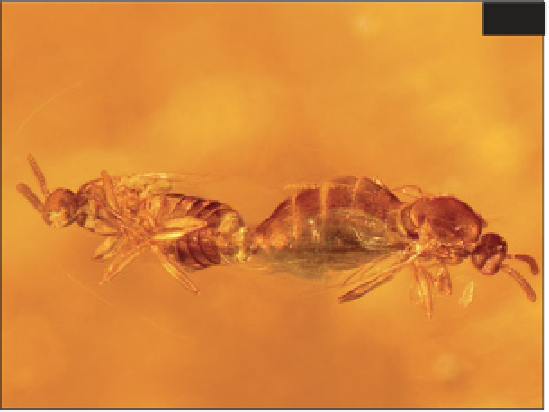Geoscience Reference
In-Depth Information
Primitive colletid bees are first represented
in the fossil record in Dominican amber.
Colletid bees are solitary, living in cavities;
the earliest orchid bee (Euglossini), which
is also solitary but tends to live in
aggregations, is recorded from the amber;
while halictids construct individual burrows
in small townships - an advance towards
sociality. The commonest bee in the amber
is
Proplebeia dominicana
, a social stingless
bee. These bees use their mandibles rather
than a sting to deter intruders, and use
resin to make their nests. Collecting resin is
clearly a hazardous acivity! The familiar
social paper wasps (Vespidae) are
represented in Dominican amber by some
body fossils and also a part of a nest.
Siphonaptera (fleas) are rare in the fossil
record, yet two genera are known from
Dominican
amber
(Poinar,
1995),
ectoparasites of rodents (
268
).
Diptera (flies) are the second largest
order of insects after the Coleoptera.
Among the many families found in
Dominican amber, some of the commonest
are the Anisopodidae (wood gnats) and
Scatopsidae (black scavenger gnats,
269
),
whose larvae live on decaying organic
268
268 Flea Siphonaptera:
Rhopalopsyllidae PC.
Length about 2 mm 0.08 in.
269
269 A mating pair of black
scavenger gnats Scatopsidae
PC. Body length 1.9 mm
0.07 in.




Search WWH ::

Custom Search